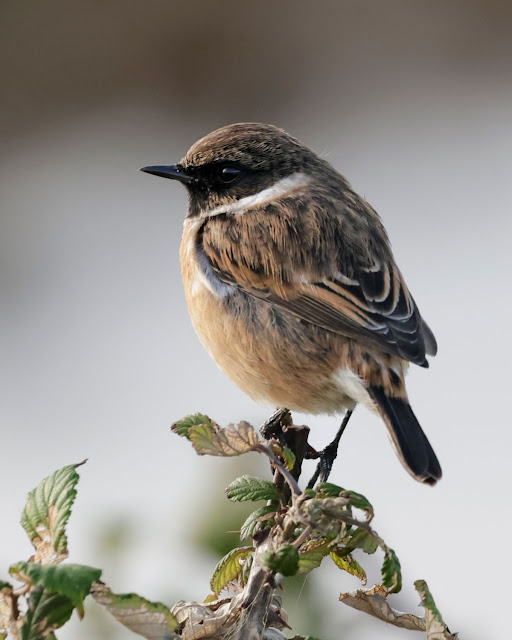The forecast for today at the start of the week was good, but overnight it had deteriorated with rain forecast now late morning. I arrived in some lovely sunshine and it was a little cold as I walked towards Lower Pennington Lane. Pennington Marsh was partially flooded and there were Canada Geese amongst the cattle grazing. The whistles of Wigeon sound out across the marsh and it sounded like winter.
I walked down the west side of the old tip towards Fishtail lagoon. It became very clear that the water levels were very high once more and as I walked on to the sea wall it was clear why, the sluice was blocked and there was one Hampshire County Council worker, armed with a fork, trying to clear away what was blocking the water from leaving.
Walking along the sea wall there were Goldfinches feeding on the seed heads.
There were quite a few duck on the lagoon, although not the numbers that will likely be present later in the year. Wigeon, Teal and Shoveler were present and it was nice to see the Pintail in full breeding plumage at last.
A much cleaner and smarter male than those seen at Titchfield over the last week.
With the high water levels there were no waders of note on the lagoon, in fact I could only see Lapwing. Out on the mud on the other side of the sea wall a Curlew was feeding.
On the corner of Butts Bay I stopped to cover my camera as it looked like the showers were to arrive a little earlier than that forecast. Offshore there was a movement of Mediterranean Gulls east to west.
I walked on towards Oxey Marsh. There was very little on the shore or in any of the lagoons.
As the sea wall turns north there were several Redshank feeding in amongst the shallow water and weeds, one gently pecking at the weed as it spun in the water
On Friday there was a report of a female Ruddy Duck at Blashford. Back in the nineties Ruddy Ducks were all over the place, when I lived in Essex there good sized populations on Abberton and Hanningfield Reservoirs and I even had a pair on the small lake on my patch at East Tilbury.
Ruddy ducks were brought to the UK in the 1940s and have
made this their home. However, reports of this little duck reaching Spain and
mating with the rare white-headed duck caused outrage amongst certain bird
groups. Their offspring were said to be ‘impure hybrids’, and this sealed their
fate.
Calls for a ruddy duck cull began in the political arena,
however. It is believed that Spain was feeling under pressure from other EU
countries for its lack of action in protecting the Spanish steppes from the
ravages of intensive agriculture, the steppes being important for the survival
of species such as the black vultures. Spain retaliated to the chiding by
demanding action on the ruddy duck, which it claimed was threatening the
survival of the now cherished white-headed duck. British conservationists took
up the challenge, and the rest – including the £3.3 million of taxpayers’
money, which funded the killing – is history. The reality is that the
white-headed duck has been hunted extensively and has lost its natural habitat
to human destruction. Yet, rather than remedy the problems, the ruddy has been
made the fall guy.
The Maccoa Duck is another ‘Stiff-tail’ Duck, which is found in south and east Africa. So I didn't go on Monday to see it, but with such a poor morning today I decided I would give it a go interested in the differences with a female Ruddy Duck.
It didn't take long to locate the duck, but it was roosting, anchored in some weed on the surface.
I went from a walk around the reserve, this Great Spotted Woodpecker at the Woodland Hide



































No comments:
Post a Comment